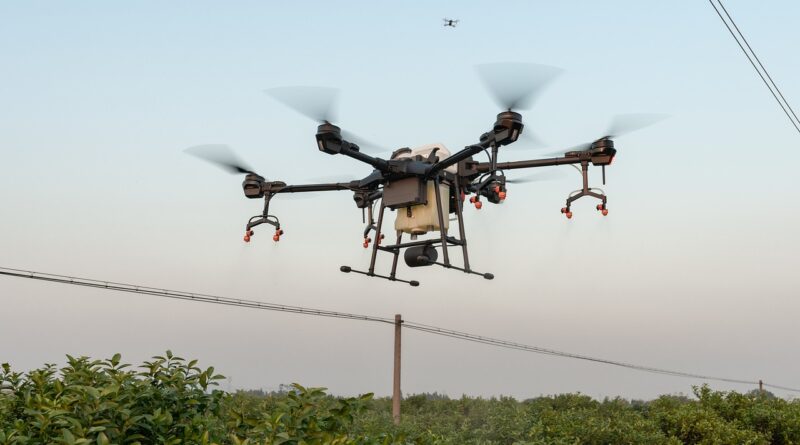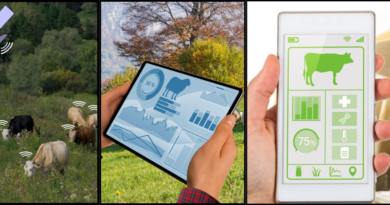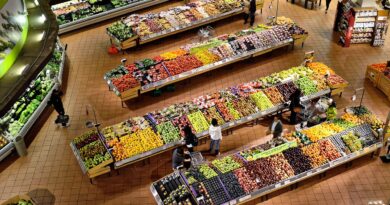Drones for Sustainable farming: Modern practices

Introduction:
Drone-powered precision agriculture is a technological revolution that promises to completely change the way we approach farming in the dynamic field of agriculture, where innovation and cultivation meet. The combination of cutting-edge aerial technology with the age-old craft of farming is leading this revolution, creating a paradigm shift in agriculture that is more efficient and sustainable.
Definition of Drones in Precision Agriculture:
A strategy that uses technology to maximize different parts of farming is called precision agriculture, or often just precision farming. The use of drones, or unmanned aerial vehicles, outfitted with a variety of sensors, cameras, and advanced data analytics tools, is a key component of this strategy. Flying across the skies, these technological wonders gather detailed information that helps farmers make decisions by giving them practical insights.
principle of precision agriculture:
Precision agriculture’s Precision Livestock Farming with IoT: Animal Welfare in Agriculture fundamental idea is to tailor agricultural techniques using real-time data so that resources like water, fertilizer, and pesticides are supplied exactly where and when they are required. In this procedure, drones are essential because they provide a bird’s-eye perspective of the farmland, allowing farmers to monitor crops, evaluate soil quality, and spot irregularities with unmatched accuracy.
Drones and precision agriculture together effectively signal the beginning of a new era in farming that is centered on efficiency, sustainability, and data. With each drone flight advancing a more resilient and sustainable method of feeding the world, this dynamic team is more than just a technological innovation—they are a powerful force reshaping the agricultural landscape.
The Role of Drones in Precision Agriculture:
Drones, or unmanned aerial vehicles (UAVs), play a multifaceted role in enhancing the precision and efficiency of agricultural practices. Here are key aspects of the role drones play in precision agriculture:
Data Collection and Analysis:
Drones with sophisticated cameras and sensors are able to take detailed pictures of farm areas. This information is crucial for evaluating crop health, spotting insect infestations, and keeping an eye on general field conditions. Farmers may make decisions about irrigation, fertilization, and pest management with the use of advanced data analysis, which provides insightful information.
Real-time crop monitoring:

Real-time crop monitoring during the growing cycle is one of the main uses for drones. Drones are able to identify early indicators of illness, stress, and nutritional deficits by routinely scanning the fields. This enables farmers to carry out prompt interventions, averting possible crop losses and guaranteeing ideal yields.
Precision Application of Inputs:
The accurate application of inputs like pesticides, herbicides https://en.wikipedia.org/wiki/Herbicide, and fertilizers is made possible by drones. Farmers may reduce the usage of pesticides, minimizing their impact on the environment and improving resource efficiency, by effectively targeting specific sections of the field. This focused strategy improves farming strategies’ general sustainability.
Mapping and Planning:
Drones produce precise topographical maps of agricultural fields, which aid in proper mapping and planning. Different soil compositions, moisture contents, and other characteristics can be distinguished on these maps. Equipped with this knowledge, agriculturalists may create customized plans for sowing, gathering crops, and allocating resources, therefore fostering maximum effectiveness and durability.
Livestock Management:
Drones have shown value not just in crop monitoring but also in animal management. They may be used to keep an eye on the wellbeing and mobility of animals, evaluate the state of pastures, and even help in herding. The welfare of both crops and animals is guaranteed by this all-encompassing approach to farm management.
Environmental Impact Assessment:
Drones contribute to assessing the environmental impact of agricultural activities. They can identify areas prone to erosion, pollution, or other ecological concerns. This information empowers farmers to implement conservation measures, fostering a more sustainable and environmentally friendly approach to agriculture.
Cost-effective Surveillance:
Drones offer economical monitoring over vast agricultural regions that may be difficult or time-consuming to staff by hand. By enhancing overall farm security and discouraging theft and unwanted activity, this airborne view helps.
Crop health assessment:
Drones evaluate plant stress and oxygen levels, among other elements of agricultural health, using cutting-edge imaging technologies. Farmers are able to identify minute variations in crop conditions thanks to this thorough study, resolving possible problems before they become more serious. The capacity to keep an eye on a crop’s physiological state improves both resource management and total productivity.
Biodiversity Conservation:
Drones are useful for keeping an eye on and protecting biodiversity near and on farms. Farmers may undertake biodiversity conservation by evaluating how their operations affect nearby ecosystems. This all-encompassing strategy encourages farming and natural habitat coexistence, which benefits the area’s overall ecological health.
In conclusion, drones play a variety of roles in precision agriculture, including many uses that extend beyond conventional agricultural methods. Drones are now considered essential partners in the fight for efficient and sustainable agriculture, helping with everything from early pest recognition to climate monitoring, biodiversity preservation, and economic viability. Drones’ potential to improve precision agriculture and contribute to global food security is still a bright and exciting area for the agriculture business as technology advances.
Benefits of Drones in Sustainable Agriculture:

Drone integration into sustainable agriculture yields a number of advantages, transforming conventional agricultural techniques and opening the door to more economical and ecologically friendly methods. The following are some major benefits of drone use in sustainable agriculture:
Resource Efficiency:
Farmers may make the most efficient use of vital resources like pesticides, fertilizers, and water thanks to drone technology. Drones enable farmers to direct resources exactly where they are required by giving precise, real-time data on crop health and field conditions. This focused strategy encourages overall resource efficiency, minimizes waste, and limits its impact on the environment.
Reduced environmental impact:
Drones provide precision input applications, which significantly reduces the need for chemicals. This reduces the environmental impact of traditional agricultural methods while also lessening problems like contaminated soil and water. Drones assist sustainable agriculture, which fosters long-term environmental stewardship and a healthy ecosystem.
Cost Savings:
Farmers save money as a result of resource optimization and decreased input requirements. Drone-powered precision agriculture Dynamic Agriculture and Its Top 15 Examples makes it possible to allocate resources more wisely, which improves the financial sustainability of agricultural businesses. Sustainable agricultural techniques are being adopted in large part because of this economic efficiency.
Enhanced crop yields:
Drones are essential for the early identification of pests, illnesses, and agricultural stress. Drone-generated data allows for timely treatments that guarantee crop health throughout growth. In addition to preventing yield losses, this proactive method boosts total production, advancing the objectives of sustainable agriculture and food security.
Precision Land Management:
Drones provide information on soil composition, topography, and moisture content while helping to create precise maps of agricultural areas. Farmers may use this knowledge to carry out exact land management techniques, such as tailored planting schedules and efficient watering. Reduced environmental impact and increased land use efficiency are the outcomes.
Climate Resilience:
Drones that track weather trends and gather data in real time help farmers predict and adjust to changing weather conditions more effectively. In the face of climate change, this resilience is essential because it enables farmers to modify their operations to reduce the risks associated with extreme weather events, eventually promoting resilient and sustainable agriculture.
Time Efficiency:
Drones make it possible to quickly gather and analyze data over vast agricultural regions. Farmers may make well-informed decisions quickly with this time-efficient method, especially in crucial phases of crop growth. Shorter reaction times guarantee prompt and effective interventions, which is a benefit of good management methods.
Improved Livestock Management:
Drones help in livestock management by providing floating observation in addition to crop monitoring. Farmers are able to evaluate pasture conditions, keep an eye on the wellbeing and mobility of their livestock, and decide on grazing schedules with knowledge. This all-encompassing strategy promotes sustainable methods for managing animals and crops.
Data-Driven Decision Making:
Drones generate a wealth of data that empowers farmers to make informed, data-driven decisions. Analyzing this information allows for continuous improvement in farming practices, adapting to changing conditions, and optimizing strategies for long-term sustainability.
Accessibility and affordability:
It is now more possible for farmers, especially smallholders, to adopt sustainable agricultural techniques because of drone technology’s rising accessibility and affordability. Drone technology has the potential to significantly improve agriculture’s sustainability as its cost continues to decline.
Erosion Control:
Drones contribute to erosion control by providing insights into soil health and topography. By identifying areas prone to erosion, farmers can implement targeted measures to prevent soil degradation. This includes contour farming, cover cropping, and other erosion control practices, promoting sustainable land management.
Minimized Soil Compaction:
Drones help locate spots in fields where the soil is compacted. Farmers may minimize soil compaction by adjusting machinery and equipment operations with the use of this information. Decreased compaction promotes better root growth and improves the general structure of the soil, both of which maintain soil fertility.
Pollinator Conservation:
Drones can be utilized to monitor and protect pollinators critical to crop production. By identifying areas with high pollinator activity, farmers can implement conservation measures to support these essential contributors to biodiversity and crop pollination.
Educational Opportunities:
Drone integration in agriculture offers farmers and agricultural students educational possibilities. Individuals are empowered to use technology for sustainable farming through training programs and workshops on drone operation and data analysis, which advances agricultural practices.Integration in agriculture offers farmers and agricultural students educational possibilities. Individuals are empowered to use technology for sustainable farming through training programs and workshops on drone operation and data analysis, which advances agricultural practices.
With everything considered, the advantages of using drones in sustainable agriculture are numerous and extensive, including social, economic, and ecological aspects. Drones’ ability to further optimize and improve sustainable agricultural operations is still a viable route for the future of agriculture as long as technology keeps developing.
conclusion
Drones are becoming a potent instrument in precision agriculture, advancing environmentally friendly farming methods. Farmers can minimize their environmental impact, maximize resource use, and make well-informed decisions thanks to the incorporation of drone technology. Using drones to their full potential in agriculture is a critical first step toward building a more resilient and sustainable future as we manage the difficulties of feeding an expanding global population. To keep up with the newest developments in sustainable practices and green technologies, visit greenhealings.com.




